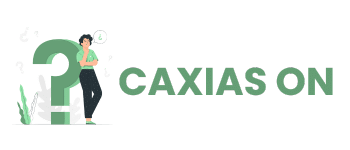In recent years, Microfinance and personal loan options have emerged as viable alternatives to traditional banking in Canada. These financial solutions offer a lifeline to individuals and small businesses that might otherwise struggle to secure funding. With a unique approach to lending, microfinance institutions provide accessible and customizable financial products.
Microcredit programs are typically aimed at those who don’t have access to conventional banking services. Often, these individuals face difficulties in securing credit due to a lack of collateral or a poor credit history. Microfinance institutions step in to fill this gap, offering small loans that can be crucial for personal development or business growth.
The impact of microfinance on the community

The influence of microcredit extends far beyond individual borrowers. When individuals gain access to financial resources, they can invest in their businesses, education, or personal health, creating a ripple effect throughout the community. Small enterprises, backed by microloans, often generate employment opportunities, thereby contributing to the local economy.
Moreover, microfinance programs frequently emphasize women’s empowerment by providing women with the financial tools they need to become economically active. This not only improves household incomes but also transforms social dynamics. Empowered women are more likely to invest in their children’s education and health, leading to long-term societal benefits.
How to apply for a microloan
Applying for a microloan differs significantly from the traditional loan application process. Microfinance institutions are usually more flexible and accessible, requiring fewer formalities. Prospective borrowers typically need to provide basic personal information, a preliminary business plan if applicable, and sometimes a recommendation or guarantee from a community member. This simplified process enables a broader spectrum of individuals to gain access to needed funds.
Once an application is submitted, it is reviewed in a holistic manner. Unlike banks that rely heavily on credit scores, microfinance institutions consider a borrower’s overall financial behavior, potential, and community standing. This means that even those with poor or no credit histories can still be considered for a loan. This inclusive approach makes microfinance an appealing option for many who are overlooked by traditional banks.
Personal loans: An accessible option for many canadians
While microloans target the underserved, personal loans serve a broader segment of the population. These loans can be used for various purposes such as consolidating debt, financing major purchases, or covering emergency expenses.
Personal loans from non-traditional sources like credit unions or online lenders often come with fewer restrictions and more lenient approval criteria compared to traditional banks, making them an attractive choice for many Canadians.
Interest rates for personal loans can vary widely depending on the lender, the borrower’s creditworthiness, and the loan amount. Non-traditional lenders tend to offer competitive rates to attract borrowers and also provide flexible repayment options. This level of adaptability is particularly advantageous in managing personal finances, as borrowers can select loan terms that align with their financial capabilities.
Evaluating your options
Before deciding between a microloan and a personal loan, it is crucial to assess your financial situation thoroughly. Review your needs, consider the loan’s purpose, and evaluate your ability to repay the borrowed amount.
Understanding the terms and conditions offered by different lenders is vital to making an informed decision. Researching and comparing various options will help you find the most suitable loan for your specific needs.
It is also beneficial to seek financial advice from trusted experts or financial advisors who can provide insights based on your unique circumstances. They can help clarify any ambiguities regarding terms, interest rates, and repayment plans, ensuring that you are making a well-informed choice. A comprehensive understanding of your options will enable you to navigate the borrowing process more effectively.
Final thoughts
In conclusion, microfinance and personal loans offer valuable alternatives to traditional banking in Canada. By providing accessible and flexible financial solutions, these institutions empower individuals and small businesses to achieve their goals.
Microloans, in particular, have a profound impact on community development and financial literacy, while personal loans offer rapid and adaptable funding for various needs. As the financial landscape continues to evolve, these alternative lending models underscore the importance of inclusive and adaptable financial services.
Whether you are seeking to start a business, consolidate debt, or manage personal expenses, exploring microfinance and personal loan options can offer the support you need. By making informed decisions and utilizing these resources effectively, you can pave the way for a more secure and prosperous financial future.
Ultimately, the rise of microfinance and personal loans in Canada signals a shift towards more equitable and supportive financial systems. As these models gain traction, they will continue to contribute positively to individual lives and the broader economy, underscoring the vital role of inclusive finance in fostering sustainable development.
